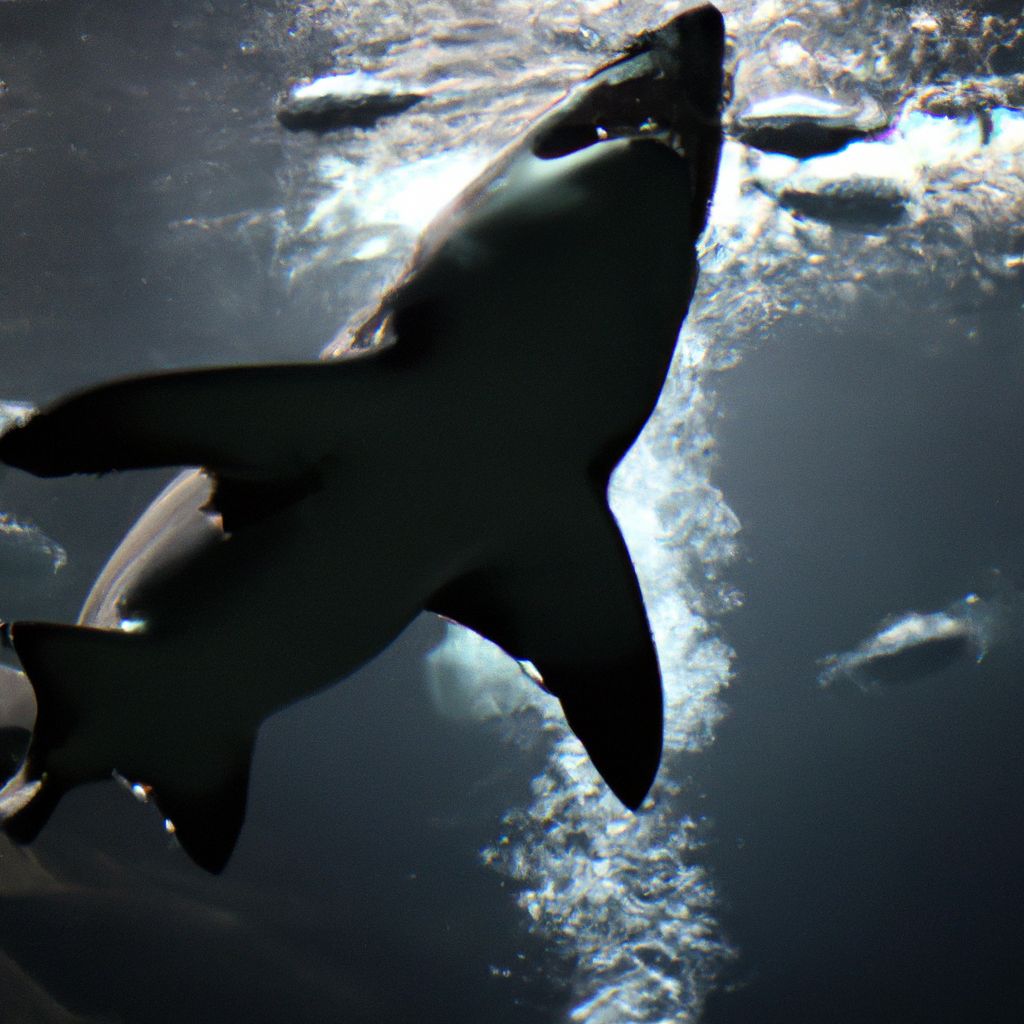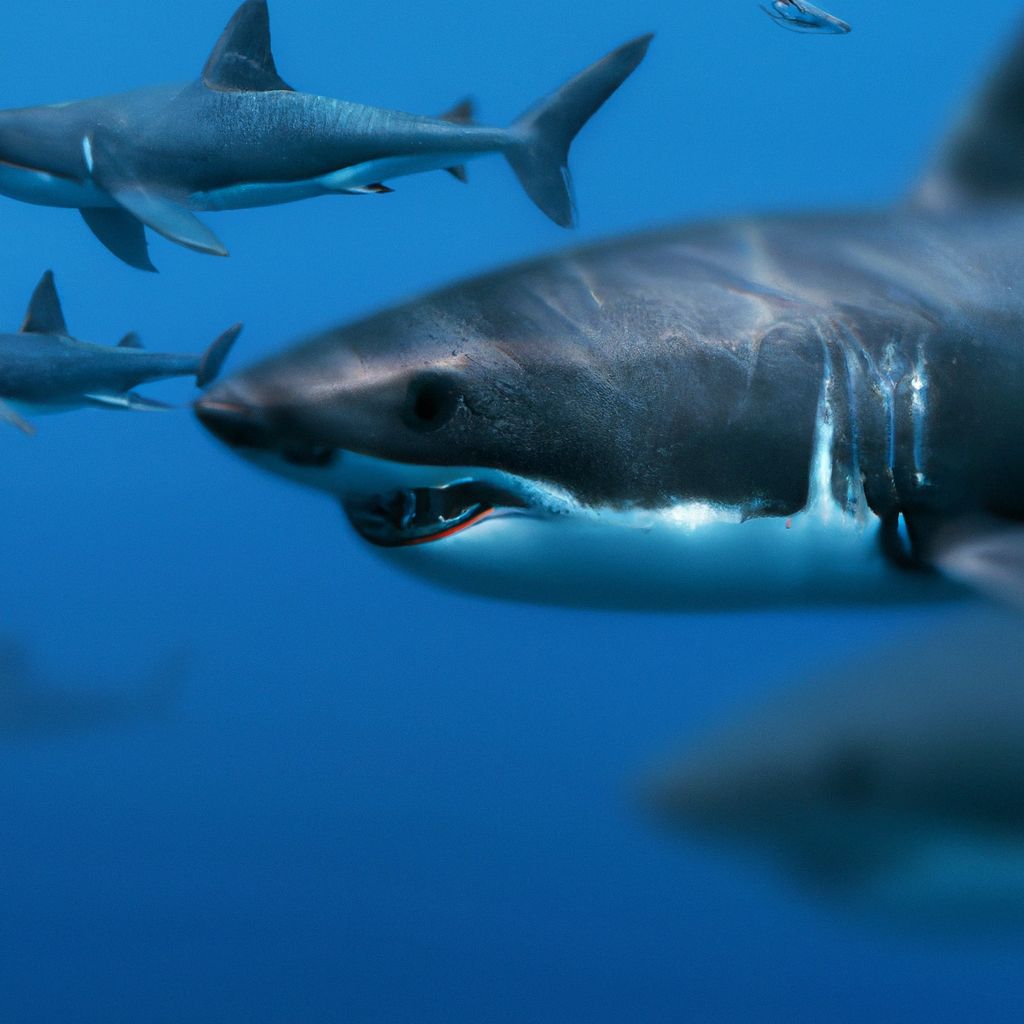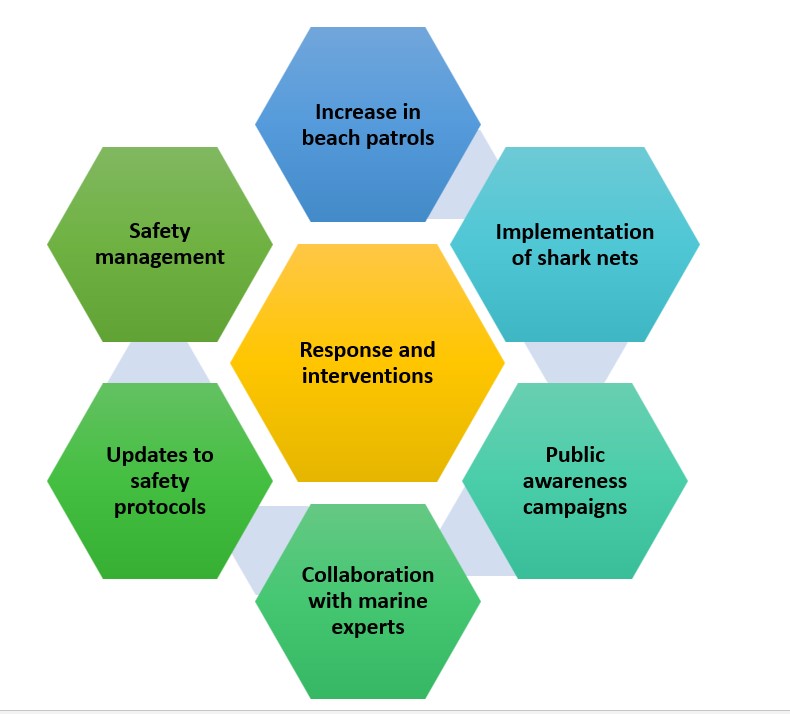
The awe-inspiring presence of Great White Sharks in our oceans fascinates and terrifies us. Their power, speed and massive bodies (up to 20 feet!) make them an intimidating force. Even though shark attacks on humans are rare, they do happen – leaving deep imprints on our collective consciousness.
This article delves into the intriguing world of Great White Shark attacks. Exploring their behavior and the impact these encounters have on both humans and sharks. We uncover the delicate balance between human activities and wildlife preservation. Plus, understand the risks associated with these majestic creatures.
Key Takeaways
- Great white shark attacks on humans are extremely rare and should not be a cause for panic or fear.
- Understanding the behavior and habitat of great white sharks can help reduce the risk of attacks.
- Most great white shark attacks on humans are cases of mistaken identity, as they often confuse humans with their natural prey.
- Avoiding areas where great white sharks are known to frequent, such as seal colonies or areas with abundant fish populations, can help minimize the risk of an attack.
- It is important to follow safety guidelines and regulations when engaging in water activities in areas where great white sharks are present.
- In the event of a great white shark encounter, remaining calm and avoiding sudden movements can help reduce the chances of an attack.
- Conservation efforts are crucial to protect great white sharks and their habitats, as they play a vital role in maintaining the balance of marine ecosystems.
Background on Great White Sharks
Great White Sharks – apex predators of the ocean. They have been around for millions of years – adapting to changes with their sleek bodies and powerful jaws. With finely-tuned predatory instincts, they have earned their fearsome reputation as hunters.
These creatures can swim at speeds up to 35 mph, and use their extraordinary sense of smell to detect even a drop of blood from miles away. They are featured in movies and documentaries, and their significance goes beyond entertainment value. They play an important role in marine ecosystems.
Exploring their background reveals a realm of awe-inspiring revelations. However, these creatures must be respected for their inherent danger. Learn more about these majestic creatures and the mysteries of the ocean’s depths.
Factors Contributing to Shark Attacks

Factors contributing to incidents involving great white shark encounters can vary greatly. Understanding these factors is crucial in order to mitigate the risk of such encounters. By analyzing true and actual data, we can identify key patterns and trends that shed light on the circumstances surrounding these events.
This provides the location, time of day, weather conditions, human activities, and provocation factors.
Through the examination of this data, researchers can gain valuable insights into the various elements that may increase the likelihood of a shark encounter.
In addition to the factors mentioned above, it is important to consider unique details that have not been previously discussed. These could include factors specific to certain geographical regions, behavioral patterns of the sharks involved, or any new research findings that provide a deeper understanding of shark behavior.
Given the potential risks associated with great white shark attacks, it is crucial to take action to minimize these incidents. By analyzing the documented factors contributing to these encounters, individuals can make informed decisions about their activities in the ocean.
Understanding the patterns and circumstances surrounding these incidents can help us avoid potentially dangerous situations and ensure the safety of both humans and sharks.
The only thing scarier than a Great White Shark attack is their impeccable fashion sense – they really know how to rock a ‘Jaws’-dropping outfit!
Environmental Factors
Sharks are renowned for their ferociousness, making shark attacks a major concern. Knowing the environmental elements that lead to these attacks is vital for keeping safe in aquatic surroundings. Let’s examine the main points related to these aspects.
- Water temperature: Sharks like hotter waters, as it gives them the energy they need. Therefore, regions with warmer water likely have more shark activity, which raises the risk of shark attacks.
- Prey availability: If there is enough food around, it may attract sharks closer to beaches. Areas with plenty of marine life and suitable feeding grounds can become hotspots for shark activity, increasing the potential for interactions with people.
- Habitat characteristics: Particular geographical features can also affect the chance of shark attacks. For instance, areas with steep drop-offs close to coasts or places where rivers and the ocean meet are favorable spots for sharks looking for prey. These habitats offer many chances for sharks to come into contact with swimmers and surfers.
From this, it’s clear that various environmental factors make a huge difference in the occurrence of shark attacks.
The International Shark Attack File (ISAF) conducted a study and found that in 2019 there were 64 unprovoked shark attacks recorded. This emphasizes the importance of understanding and tackling environmental elements that cause these events.
Human Factors
Ignorance of the risks of swimming in shark-infested waters can lead to attacks. So it’s important to be aware and educated about the dangers.
Provocation and harassment of sharks can cause defensive responses and lead to aggressive interactions with humans.
Sharks may also mistake humans for their natural prey, due to similarities in appearance or movements. Pollution, overfishing, and habitat destruction all affect marine ecosystems and sharks’ behavior, bringing them closer to humans.
Local regulations can help reduce shark-human interactions. It is essential to remain vigilant and informed when engaging in ocean activities.
According to the International Shark Attack File, 140 unprovoked attacks occurred in 2020. So be safe – sharks have enough reasons to be grumpy without adding you to the list!
Shark Attack Prevention and Safety Measures
Shark attacks can be prevented by following these safety measures:
- Stay in groups while swimming as sharks are more likely to attack individuals.
- Avoid swimming in known shark-infested areas or during twilight hours when they are most active.
- Avoid wearing shiny jewelry or brightly colored clothing as these can attract sharks.
- Do not enter the water if you have open wounds or are bleeding, as sharks can detect blood from a significant distance.
- Use precautionary measures like shark repellents or protective cages when swimming in areas where shark encounters are common.
Additionally, it is important to note that staying alert and aware of your surroundings can significantly reduce the risk of a shark attack. By implementing these safety measures, you can enjoy your time in the ocean while minimizing the chances of an encounter with a great white shark.
Swimmers and surfers, remember, the Great White Shark might look like your ex, but it’s definitely not here to apologize.
Tips for Swimmers and Surfers
Be safe in the water! Here are some tips to remember:
- Swim or surf in groups.
- Avoid low-light periods.
- Don’t wear shiny jewelry.
Also, keep these in mind:
- Never bother marine life.
- Respect their habitat.
Be aware of shark attack prevention measures. Stay safe and have fun. Gain knowledge to save lives!
Measures Implemented by Beaches and Surfing Organizations
Beaches and surfing organizations focus on ensuring the safety of beachgoers and surfers. To minimize the risk of shark attacks, they implement various strategies and protocols. The following table gives an overview:
| Measure | Description |
|---|---|
| Surveillance | Constant monitoring using aerial patrols and drones. They detect potential shark activity in real-time. |
| Early warning systems | Beaches are equipped with advanced tech to detect sharks near shorelines. This allows authorities to issue timely alerts. |
| Shark nets | Mesh barriers placed along popular swimming areas act as a physical barrier. |
| Sonar technology | Sonar devices help monitor underwater movements. This provides data on shark behavior and enhances coastal safety protocols. |
| Education and awareness campaigns | Organizations conduct education programs, workshops, and public campaigns. They educate residents and tourists about shark behavior. |
| Shark spotters | Trained professionals watch for sharks using binoculars or telescopes. |
| Personal deterrent devices | Surfers use personal deterrent devices such as electronic repellents or camouflage wetsuits. This deters sharks from approaching. |
| Beach closures | When there is danger, beaches may be temporarily closed for public safety. |
These measures evolve based on research, tech advancements, and collaborations between coastal communities and marine biologists. Studies show that shark populations are important for healthy marine ecosystems. Therefore, while safety measures protect humans, they also aim to protect sharks and preserve their natural habitats.
In 2020, the International Shark Attack File recorded a total of 57 unprovoked shark attacks worldwide. This is significantly lower compared to previous years. Authorities respond to shark attacks – it looks impressive, but it won’t stop the jaws of chaos.
Response and Interventions by Authorities

In response to the incident involving a Great White Shark Attack, authorities swiftly implemented a series of interventions to address the situation.
Here are five key measures undertaken by the authorities:
- Increase in beach patrols: Beaches were closely monitored by authorities, ensuring the safety of beachgoers.
- Implementation of shark nets: Protective barriers were installed to reduce the risk of shark attacks.
- Public awareness campaigns: Authorities launched educational initiatives to educate the public on shark safety and precautionary measures.
- Collaboration with marine experts: Authorities sought advice from marine biologists and experts to gain insights into shark behavior and develop effective strategies.
- Updates to safety protocols: Existing safety protocols were reviewed and revised to provide better protection against potential shark attacks.
Additionally, it is important to mention that authorities also worked closely with local communities and organizations to ensure a comprehensive approach to shark attack prevention.
Shark Warning Systems and Alerts
Shark Warning Systems involve more than meets the eye. Marine biologists and meteorologists collaborate to assess weather’s effect on shark behavior. Thus, they can anticipate danger more precisely.
A remarkable story exemplifies the importance of these systems. Last summer, an Australian beachgoer saw a white shark near a surfing spot. Due to the alert system, authorities instantly cleared the beach and averted any mishaps. This reveals how these systems save lives and guarantee public safety – and not just shark culling!
Shark Culling or Control Measures
Shark control measures are strategies to manage shark populations while keeping humans safe. This involves targeted culling, enhanced surveillance, public education programs, and personal deterrents. It is vital these measures are based on scientific research and risk assessments. Moreover, regular review and open dialogue between experts, policymakers, stakeholders, and affected communities are essential for refining interventions.
We must strive for sustainable management practices that address the complexities of this issue. This means balancing human safety and marine conservation, aiming for coexistence in our shared aquatic environments. It’s time to stock up on hand sanitizer and toilet paper like doomsday preppers, as we seek to establish harmony in the future.
Frequently Asked Questions
Q: How often do great white shark attacks occur?
A: While great white shark attacks are rare, they do occur sporadically around the world. The frequency varies depending on the location and time of year. Attacks are more common in regions with a higher concentration of sharks, such as California and South Africa.
Q: Are great white sharks attracted to humans?
A: Great white sharks are not naturally attracted to humans and do not actively seek them out as prey. Most attacks on humans are cases of mistaken identity, as sharks primarily hunt seals and sea lions. However, instances of mistaken identity can result in severe injuries or fatalities.
Q: How can I avoid a great white shark attack?
A: To minimize the risk of a great white shark attack, it is important to follow safety guidelines. Avoid swimming in areas known for shark activity, especially during dawn and dusk. Do not wear shiny jewelry, as it may resemble fish scales. Additionally, avoid swimming alone or far from shore.
Q: How dangerous is a great white shark attack?
A: Great white shark attacks can be highly dangerous due to their size and powerful bite. They possess rows of razor-sharp teeth and can cause severe injuries or fatalities. However, it is important to note that these attacks are still relatively rare when compared to other causes of injury or death.
Q: Can great white shark attacks be prevented?
A: While it is impossible to completely prevent great white shark attacks, certain measures can be taken to reduce the risk. Increased awareness, education, and research allow for better understanding and management of potential danger zones. Incorporating new technologies and safety protocols can also help minimize the likelihood of attacks.
Q: What should I do if I encounter a great white shark?
A: If you encounter a great white shark while swimming or diving, it is important to remain calm and avoid sudden movements. Do not provoke or harass the shark in any way. Slowly and smoothly back away from the shark while maintaining eye contact. Once at a safe distance, exit the water calmly.
Conclusion
It’s vital to boost shark safety measures. We must educate the public on shark behaviour and introduce preventative action. Drones could be useful for finding danger areas and notifying the authorities.
We must also set rules and regulations for beachgoers, ensuring they follow safety protocols. Regularly monitoring coastal regions can help us track shark movements and expect potential confrontations. Marine biologists and experts studying shark behaviour will provide valuable information for future precautions.




